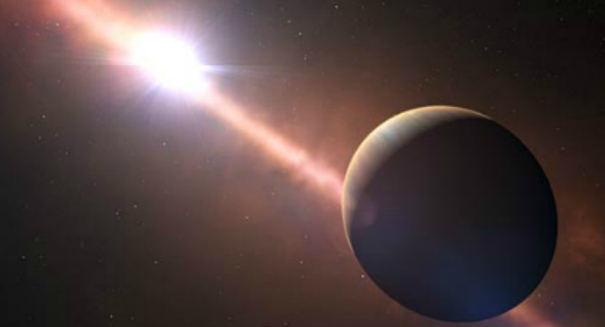
Peering deep into the orifices of our Milky Way galaxy using powerful telescopes, astronomers made an astonishing discovery that could shed more light on our galaxy.
Astronomers have discovered one of the farthest known exoplanets from Earth — a gas giant that is 13,000 light-years away.
A group of scientists using NASA’s Spitzer Space Telescope as well as a telescope here on Earth — the Optical Gravitational Lensing Experiment in Poland — are able to find and characterize planets up to 27,000 light-years away in the Milky Way galaxy’s “central bulge,” according to a Business Standard report.
This planet was found a bit further out, in the “suburbs” of the galaxy about two-thirds of the way from the center. The scientists used a microlensing technique which has allowed them to discover about 30 planets, with one 25,000 light-years away. Many of these planets cannot be pinned down into a specific location, however.
Their findings were published in the Astrophysical Journal.
The Spitzer telesocpe has been used to monitor 22 other microlensing events along with the OGLE telescope and other telescopes that are based on the ground. No more new planets have been discovered, but the data does help in the astronomers’ understanding of the number of stars and planets in the heart of the galaxy. Another 120 microlensing events will be monitored in the coming months.
The Spitzer Space Telescope is an infrared space observatory that was launched in 2003, and is the fourth and final telescope of the NASA Great Observatories program. The telescope exhausted its liquid helium supply back in 2009, making most of its instruments unusable, but its two shortest-wavelength modules of the camera are still workable and are still being used.
The telescope is currently orbiting the sun. After tweaking its hardware, astronomers have turned the telescope into a exoplanet-hunting tool.